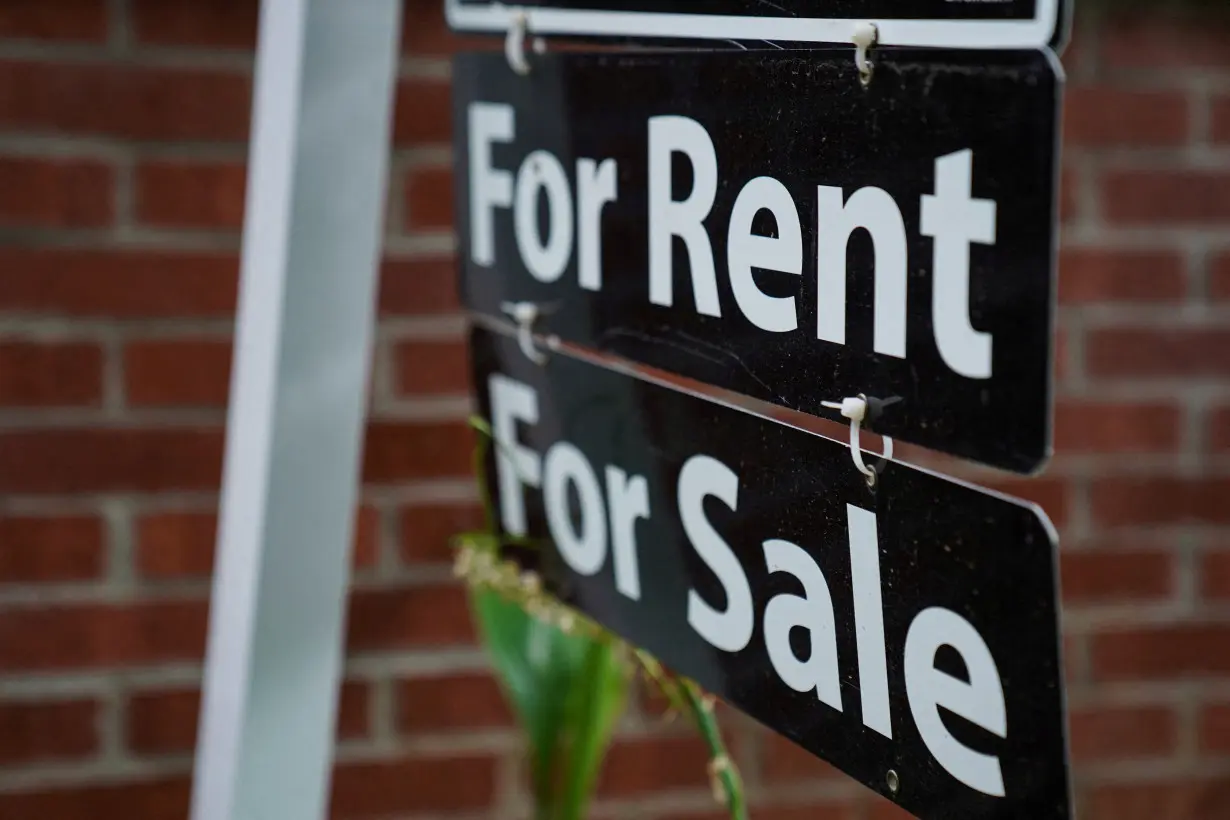(Corrects start of Fed rate hikes in paragraph 4 to March 2022)
By Dan Burns
(Reuters) - The volume of U.S. mortgage applications plummeted to the lowest in nearly three decades last week as the interest rate on the most popular type of home loan rose for a sixth straight week to the highest since 2000, the latest data to point to no near-term relief for the slumping housing market.
The Mortgage Bankers Association's weekly index of mortgage application activity fell 6.9% in the week ended Oct. 13 to 166.9, the lowest since May 1995. Applications for loans to buy a home fell 5.6% to the lowest since February 1995 and applications to refinance an existing mortgage tumbled 9.9% to the lowest since January.
The average contract interest rate on a 30-year fixed-rate mortgage rose 3 basis points to 7.70%, the highest since November 2000, MBA said. Residential borrowing costs have risen roughly by half a percentage point since the beginning of September.
Mortgage interest rates, which had been around 3% just two years ago, initially climbed on the back of the rate hikes the Federal Reserve kicked off in March 2022 to beat back inflation. More recently, however, they've been pushed higher by bond market activity with the Fed seen as at or near the peak of its tightening cycle.
The yield on the benchmark 10-year Treasury note that is heavily influential in setting mortgage rates climbed above 4.8% this week to the highest since 2007. Barring an about-face in the bond market that brings yields lower, borrowing costs look unlikely to pull back in the near term.
Data due on Thursday from the National Association of Realtors is expected by economists polled by Reuters to show that sales of previously owned houses in September fell for a fourth straight month to an annual run rate of 3.89 million homes.
That would be the slowest sales rate since 2010. In addition to high borrowing costs, sales are being restrained by very low inventory of homes on the market. Economists suspect that homeowners, many of whom have mortgages at much lower rates than are currently available, are reluctant to give up their homes only to have to buy a new one with borrowing costs remaining as high as they are now.
Potential buyers, meanwhile, are looking increasingly to adjustable-rate mortgages, which tend to feature a lower introductory rate that can be refinanced if interest rates drop down the road. The ARM share of total applications rose to 9.3%, the highest in 11 months, MBA said.
(This story has been corrected to fix the start of the Fed's rate hikes to March 2022 in paragraph 4)
(Reporting By Dan Burns; Editing by Chizu Nomiyama)

 Trump has begun another trade war. Here's a timeline of how we got here
Trump has begun another trade war. Here's a timeline of how we got here
 Canada's leader laments lost friendship with US in town that sheltered stranded Americans after 9/11
Canada's leader laments lost friendship with US in town that sheltered stranded Americans after 9/11
 Chinese EV giant BYD's fourth-quarter profit leaps 73%
Chinese EV giant BYD's fourth-quarter profit leaps 73%
 You're an American in another land? Prepare to talk about the why and how of Trump 2.0
You're an American in another land? Prepare to talk about the why and how of Trump 2.0
 Chalk talk: Star power, top teams and No. 5 seeds headline the women's March Madness Sweet 16
Chalk talk: Star power, top teams and No. 5 seeds headline the women's March Madness Sweet 16
 Purdue returns to Sweet 16 with 76-62 win over McNeese in March Madness
Purdue returns to Sweet 16 with 76-62 win over McNeese in March Madness








